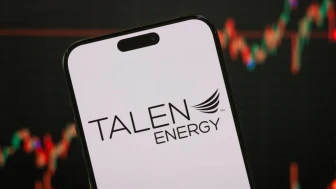In the realm of exchange-traded funds (ETFs), a new player has emerged, promising ground-breaking features but also posing a significant level of complexity. The financial markets are abuzz with the arrival of this innovative ETF, which is set to challenge traditional investment norms.
However, despite its potential, there is a palpable sense of caution surrounding its liquidity. Market experts and investors alike are closely watching this ETF, eager to see how it navigates the intricate web of financial dynamics. As the dust settles, only time will tell whether this new entrant will revolutionize the investment landscape or fade into obscurity.
Investment Fund with Significant Private Credit Component
An investment fund has set a target to allocate a minimum of 80% of its total assets to investment grade debt securities, comprising both public credit and private credit. Interestingly, the fund includes a notable portion of private credit within an ETF structure, which is quite unusual.
By packaging these alternative investments within the familiar structure of ETFs, financial institutions aim to make these typically exclusive asset classes more accessible to a broader range of investors.
The move towards offering private equity and credit exposure through ETFs reflects a growing demand from retail investors for more diverse and sophisticated investment options. Traditionally, private equity and credit investments have been reserved for institutional investors and high-net-worth individuals due to their higher barriers to entry and complex structures. However, by leveraging the ETF vehicle, Wall Street hopes to open up these opportunities to a wider audience.
Challenges of Including Private Credit in ETFs
One of the main hurdles in incorporating private credit into an ETF lies in the illiquidity of such assets. Given the liquidity requirements of ETFs, integrating private credit has historically posed challenges.
While the idea of democratizing access to private equity and credit through ETFs is gaining momentum, there are still challenges to overcome. Regulatory hurdles, valuation complexities, and liquidity issues are some of the obstacles that financial institutions need to address to ensure the success of these innovative investment products.
Overall, the trend towards offering private equity and credit investments through ETFs signals a shift towards a more inclusive and diverse investment landscape on Wall Street. As these products continue to evolve, investors can expect to see a broader range of opportunities to participate in previously inaccessible asset classes, potentially reshaping the way individuals invest for the future.
Seeking Solutions for Liquidity Issues
Asset managers are constantly exploring solutions to address the liquidity concerns associated with private credit within ETFs. Finding ways to enhance liquidity while maintaining the benefits of private credit remains a key focus for industry experts.
ETFs offer several advantages for investors looking to gain exposure to private equity and credit strategies. They provide liquidity, transparency, and diversification benefits, making them an attractive option for those seeking to enhance their investment portfolios with alternative assets. Additionally, ETFs typically have lower fees compared to traditional private equity and credit funds, further lowering the cost barrier for retail investors.
Balancing Risk and Return Profile
The inclusion of private credit in the investment fund's portfolio aims to strike a balance between risk and return objectives. By diversifying into private credit, the fund seeks to potentially enhance overall portfolio performance.
Market Response and Investor Interest
The market response to this innovative approach of integrating private credit within an ETF structure has been closely monitored. Investor interest in such strategies that offer exposure to private credit through ETFs is also gaining traction.

























